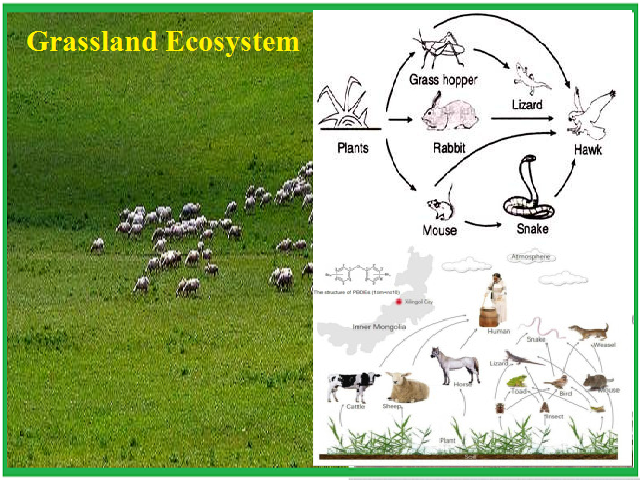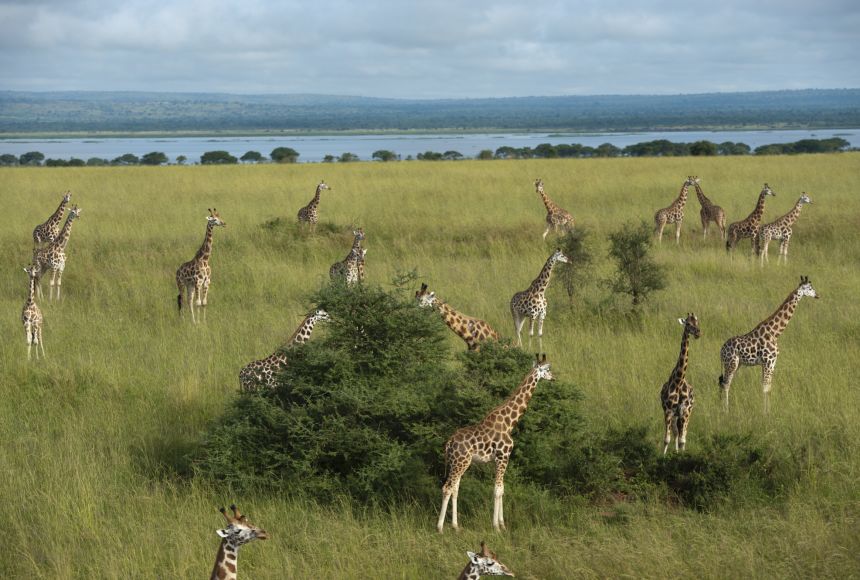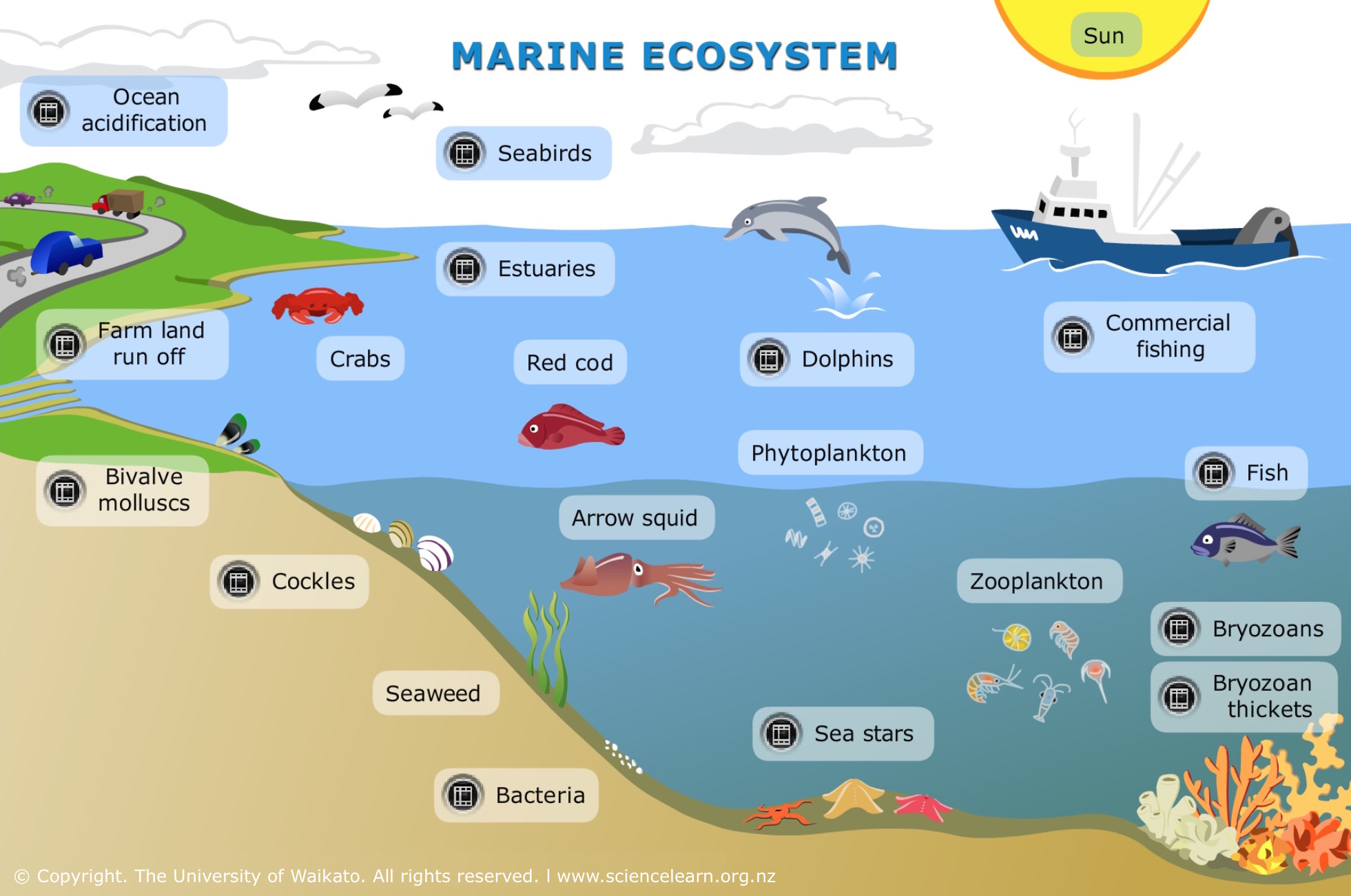Topic ecosystem of grassland: Discover the vibrant ecosystem of grasslands, where diverse plant and animal species thrive, shaping the earth"s biodiversity and offering insights into sustainable living and conservation efforts.
Table of Content
- What animals and factors contribute to the maintenance of the grassland ecosystem?
- Definition and Importance of Grasslands
- Types of Grasslands: Tropical and Temperate
- Flora: Grass Species and Plant Diversity
- Fauna: Key Animal Species and Their Roles
- Ecological Functions: Soil Formation, Carbon Sequestration, and Biodiversity
- Human Impact and Conservation Efforts
- YOUTUBE: Grasslands
- Climate Change Effects on Grasslands
- Grasslands in Global Food Security
- Restoration and Sustainable Management Practices
- Research and Monitoring of Grassland Ecosystems
What animals and factors contribute to the maintenance of the grassland ecosystem?
The maintenance of the grassland ecosystem is dependent on various animals and factors. Here are some key contributors:
- Grazing Animals: Grazing animals, such as herbivores like bison, antelopes, and zebras, play a crucial role in shaping and maintaining the grassland ecosystem. They regulate plant growth by consuming large amounts of grass and other vegetation, preventing overgrowth and promoting the growth of new shoots.
- Burrowing Animals: Burrowing animals like prairie dogs and gophers help aerate the soil and mix organic matter, contributing to nutrient cycling. Their tunnels also provide habitat for other organisms in the grassland ecosystem.
- Predators: Predators like wolves, coyotes, and birds of prey play a vital role in controlling the population of grazing animals. By preying on these animals, predators help maintain a balanced and healthy ecosystem.
- Fire: Grasslands are adapted to periodic fires, which help regulate plant growth, recycle nutrients, and promote the growth of native grasses. Fires also help control the encroachment of woody plants, ensuring the grassland ecosystem\'s integrity.
- Pollinators: Insects like bees and butterflies aid in pollination, contributing to the reproduction of grasses and other flowering plants in the grassland. This ensures the continuation of plant species diversity within the ecosystem.
Overall, the interactions between these animals and factors maintain the biodiversity, vegetation, and ecological balance in the grassland ecosystem.
READ MORE:
Definition and Importance of Grasslands
Grasslands are vast areas dominated by grasses, playing a crucial role in our planet"s ecology. They serve as habitats for a myriad of wildlife, contribute to the carbon cycle, and support human economies through agriculture and grazing. Grasslands range from the savannas of Africa, teeming with large mammals, to the prairies of North America, where bison once roamed in vast herds.
- Biological Diversity: Grasslands support a diverse range of plant and animal species, many of which are endemic and cannot be found anywhere else.
- Carbon Sequestration: They act as significant carbon sinks, storing carbon in their soil and biomass, helping to mitigate climate change.
- Soil Formation and Protection: Grassland ecosystems play a key role in soil development and prevent soil erosion due to their extensive root systems.
- Water Regulation: They help in the regulation of water cycles, filtering and storing water, which is vital for both ecosystems and human use.
- Economic Value: Beyond their ecological importance, grasslands provide essential resources for human livelihoods, including forage for livestock, materials for construction, and medicinal plants.
Despite their importance, grasslands are among the most threatened ecosystems, facing challenges from land conversion, overgrazing, and climate change. Conservation and sustainable management practices are critical to preserve these vital ecosystems for future generations.

Types of Grasslands: Tropical and Temperate
Grasslands, diverse ecosystems characterized by wide-open spaces filled with various grass species, are mainly categorized into tropical and temperate types, each hosting unique climates, flora, and fauna.
- Tropical Grasslands (Savannas): Located near the equator, these grasslands experience a warm climate year-round with a distinct wet and dry season. Savannas are characterized by scattered trees among grassy plains, supporting a rich biodiversity including large mammals like lions, elephants, and zebras, as well as various bird species.
- Temperate Grasslands: Found in regions with more extreme temperature differences between summer and winter, these grasslands lack trees except for those near water sources. They are known for their rich soils, making them important for agriculture. Species such as bison, pronghorns, and ground-nesting birds thrive here, adapted to the open, windy conditions.
Both types of grasslands play a crucial role in the Earth"s ecosystem. They are vital for biodiversity, supporting numerous plant and animal species, and are key to agriculture and livestock grazing. However, they face threats from human activities and climate change, emphasizing the importance of their conservation and sustainable management.
Flora: Grass Species and Plant Diversity
Grasslands, diverse ecosystems characterized by wide-open spaces filled with various grass species, are mainly categorized into tropical and temperate types, each hosting unique climates, flora, and fauna.
- Tropical Grasslands (Savannas): Located near the equator, these grasslands experience a warm climate year-round with a distinct wet and dry season. Savannas are characterized by scattered trees among grassy plains, supporting a rich biodiversity including large mammals like lions, elephants, and zebras, as well as various bird species.
- Temperate Grasslands: Found in regions with more extreme temperature differences between summer and winter, these grasslands lack trees except for those near water sources. They are known for their rich soils, making them important for agriculture. Species such as bison, pronghorns, and ground-nesting birds thrive here, adapted to the open, windy conditions.
Both types of grasslands play a crucial role in the Earth"s ecosystem. They are vital for biodiversity, supporting numerous plant and animal species, and are key to agriculture and livestock grazing. However, they face threats from human activities and climate change, emphasizing the importance of their conservation and sustainable management.

Fauna: Key Animal Species and Their Roles
Grasslands, diverse ecosystems characterized by wide-open spaces filled with various grass species, are mainly categorized into tropical and temperate types, each hosting unique climates, flora, and fauna.
- Tropical Grasslands (Savannas): Located near the equator, these grasslands experience a warm climate year-round with a distinct wet and dry season. Savannas are characterized by scattered trees among grassy plains, supporting a rich biodiversity including large mammals like lions, elephants, and zebras, as well as various bird species.
- Temperate Grasslands: Found in regions with more extreme temperature differences between summer and winter, these grasslands lack trees except for those near water sources. They are known for their rich soils, making them important for agriculture. Species such as bison, pronghorns, and ground-nesting birds thrive here, adapted to the open, windy conditions.
Both types of grasslands play a crucial role in the Earth"s ecosystem. They are vital for biodiversity, supporting numerous plant and animal species, and are key to agriculture and livestock grazing. However, they face threats from human activities and climate change, emphasizing the importance of their conservation and sustainable management.
Ecological Functions: Soil Formation, Carbon Sequestration, and Biodiversity
Grasslands, with their extensive root systems and varied plant life, play a vital role in the earth"s ecological balance. These ecosystems are not just open spaces; they are critical for soil formation, carbon sequestration, and supporting a rich diversity of life.
- Soil Formation: The dense root networks of grassland plants contribute significantly to the development of soil. These roots help in stabilizing the soil, reducing erosion, and enhancing soil fertility by decomposing plant material, thereby enriching the soil with organic matter.
- Carbon Sequestration: Grasslands act as a major carbon sink, absorbing carbon dioxide from the atmosphere and storing it in their biomass and soil. This process is crucial for mitigating the effects of climate change, making the conservation of grasslands an essential environmental priority.
- Biodiversity: These ecosystems are biodiversity hotspots, providing habitats for a wide range of species, from grasses and herbs to large and small fauna. This biodiversity is not only critical for ecological resilience and stability but also for the services it provides to human societies, such as pollination, pest control, and genetic resources for crop improvement.
Understanding and preserving the ecological functions of grasslands is essential for maintaining global biodiversity, climate stability, and soil health. These ecosystems offer invaluable services that contribute to the sustainability of our planet.

Human Impact and Conservation Efforts
Human activities have profoundly affected grassland ecosystems worldwide, from altering land use to introducing invasive species. However, alongside these impacts, concerted conservation efforts are underway to protect and restore these vital ecosystems.
- Land Use Change: Conversion of grasslands to agriculture and urban areas is the most significant human impact, leading to habitat loss and fragmentation.
- Overgrazing: Excessive grazing by livestock can degrade grassland quality, reduce plant diversity, and lead to soil erosion.
- Climate Change: Rising temperatures and changing precipitation patterns affect grassland species distribution and ecosystem services.
- Invasive Species: The introduction of non-native plant and animal species can disrupt local ecosystems, outcompeting native species.
Conservation efforts focus on sustainable land management practices, protected area designation, restoration projects, and policies aimed at mitigating climate change impacts. These actions are critical for preserving the ecological integrity of grasslands, ensuring they continue to provide essential services such as biodiversity conservation, carbon storage, and support for human livelihoods.
Grasslands
Grasslands: Get ready to immerse yourself in the mesmerizing beauty of grasslands! This captivating video takes you on a breathtaking journey through vast stretches of lush greenery, showcasing the diverse wildlife and serene landscapes that make grasslands truly extraordinary. Witness the graceful movements of wild animals and experience the tranquility of these untouched natural wonders. Don\'t miss the opportunity to escape into the magical world of grasslands!
Temperate Grasslands
Temperate Grasslands: Explore the enchanting world of temperate grasslands with this eye-opening video! Discover the incredible resilience of the plants and animals that thrive in these unique ecosystems, despite the unpredictable weather conditions. From the majestic herds of grazing animals to the colorful tapestry of wildflowers that blankets the prairies, this video will transport you to a realm of unparalleled beauty and wonder. Get ready to be amazed by the fascinating secrets hidden within the vast expanses of temperate grasslands!
Climate Change Effects on Grasslands
Climate change poses significant challenges to grassland ecosystems, impacting their structure, function, and the services they provide. The effects are complex, influencing not only the plant and animal species that inhabit these areas but also the broader ecological processes.
- Altered Precipitation Patterns: Changes in rainfall amounts and patterns can lead to more frequent droughts or flooding, affecting grassland productivity and species composition.
- Increased Temperatures: Rising temperatures can stress grassland species, potentially leading to shifts in species dominance and reductions in biodiversity.
- Carbon Cycle Disruption: While grasslands are important carbon sinks, climate change can alter their capacity to sequester carbon, potentially turning them into carbon sources if degradation and desertification occur.
- Impact on Plant Growth: Elevated CO2 levels and changing climate conditions can affect plant growth patterns, with some species benefiting while others are disadvantaged, leading to changes in grassland composition and productivity.
- Increased Risk of Fire: Warmer temperatures and dryer conditions increase the risk of wildfires, which can dramatically alter grassland ecosystems and reduce their ability to recover.
Addressing the impact of climate change on grasslands requires comprehensive conservation strategies, including sustainable management practices, restoration efforts, and policies aimed at reducing greenhouse gas emissions. These efforts are essential to safeguard the biodiversity and ecological services provided by grasslands in the face of a changing climate.

Grasslands in Global Food Security
Grasslands play a pivotal role in global food security, serving as the foundation for livestock production, which in turn supports the diets and economies of billions of people worldwide.
- Support for Livestock: Grasslands provide fodder for cattle, sheep, goats, and other livestock, which are a crucial source of meat, milk, and other dairy products for people around the globe.
- Soil Fertility: The rich soils of grasslands, enhanced by the decomposition of organic matter from grasses, contribute to the productivity of agricultural lands, making them vital for crop production adjacent to or within grassland areas.
- Biodiversity and Resilience: The biodiversity of grasslands supports pollinators and other beneficial species that contribute to the health of agricultural ecosystems, enhancing their resilience to pests and diseases.
- Carbon Sequestration: By capturing carbon dioxide, grasslands play a role in climate regulation, which indirectly supports agricultural productivity and food security.
- Ecosystem Services: Grasslands offer a range of ecosystem services, including water filtration and flood mitigation, that support agriculture and human well-being.
The sustainable management of grasslands is essential to maintaining their contributions to food security. This includes practices that balance livestock grazing with grassland conservation, prevent overgrazing, and protect against land conversion. Integrating grassland conservation into global food security strategies is crucial for the continued provision of these vital ecosystem services.
Restoration and Sustainable Management Practices
Restoring and sustainably managing grasslands are essential for their health and the services they provide. These practices are tailored to address degradation and promote the resilience of these ecosystems.
- Reintroducing Native Species: Planting native grasses and forbs is crucial for restoring ecological balance and supporting native wildlife populations.
- Controlled Grazing: Implementing sustainable grazing practices helps prevent overgrazing, soil compaction, and erosion, maintaining grassland health and productivity.
- Combatting Invasive Species: Managing invasive plants through mechanical, chemical, or biological control methods is vital for protecting native biodiversity.
- Fire Management: Using prescribed burns can mimic natural fire regimes, helping to regenerate grasses, control invasive species, and recycle nutrients.
- Soil Conservation: Practices like no-till agriculture can reduce soil erosion, improve water infiltration, and increase carbon sequestration in grassland soils.
- Water Management: Efficient water use and protecting water sources are important for sustaining grasslands, especially in arid and semi-arid regions.
- Conservation Easements: Legal agreements that restrict land use changes can protect grasslands from development and degradation.
These practices, combined with research, monitoring, and community involvement, are key to the successful restoration and sustainable management of grassland ecosystems. They ensure grasslands continue to support biodiversity, provide ecosystem services, and sustain livelihoods.

READ MORE:
Research and Monitoring of Grassland Ecosystems
Research and monitoring are crucial for understanding the health, biodiversity, and functionality of grassland ecosystems. These efforts provide the data necessary to inform conservation strategies and sustainable management practices.
- Ecological Research: Studies focus on understanding the complex interactions within grassland ecosystems, including the relationships between plant and animal species, soil health, and the impact of climate change.
- Biodiversity Monitoring: Regular monitoring helps track changes in species diversity and abundance, which can indicate the health of the ecosystem and the effectiveness of conservation measures.
- Climate Impact Assessments: Research into how changing climate conditions affect grasslands is vital for predicting and mitigating future impacts on these ecosystems and their capacity to provide ecosystem services.
- Soil Health Studies: Soil is a critical component of grassland ecosystems. Studies assess soil composition, erosion rates, and organic matter content to ensure sustainable land use and agricultural practices.
- Remote Sensing and GIS Technologies: These tools are increasingly used for large-scale monitoring and assessment, providing valuable data on grassland conditions, changes over time, and the effects of human activities.
- Long-term Ecological Research Sites: These sites provide invaluable data on ecological processes over time, helping scientists to understand trends, cycles, and the effects of various factors on grassland ecosystems.
Through ongoing research and monitoring, scientists and land managers can develop strategies to preserve grassland ecosystems, ensuring they continue to support biodiversity, provide ecosystem services, and sustain human needs.
Grasslands are vital ecosystems, offering unparalleled biodiversity, crucial ecosystem services, and supporting global food security. Preserving these landscapes through sustainable practices ensures a resilient future for our planet and generations to come.


:max_bytes(150000):strip_icc()/164249141-56a006353df78cafda9fb0e5-be1ea8f1f1774e12bde868a948812d8d.jpg)









